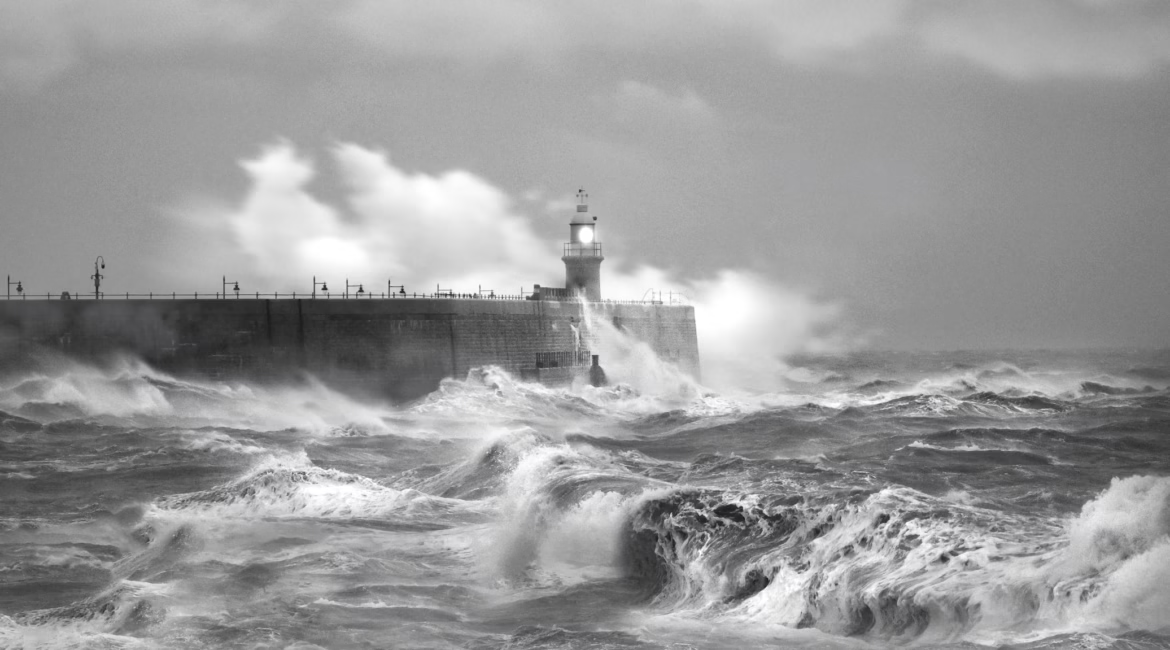Living in Florida, I’ve come to accept that storms and strong winds are as much a part of our landscape as the palm trees and sandy beaches. I recall one afternoon when a sudden gust sent my carefully arranged patio furniture into the pool—an amusing reminder of nature’s unpredictability. Such experiences underscore the importance of being prepared, especially as we age and may find ourselves more vulnerable during these events. Protecting ourselves from heavy storms means staying informed about weather alerts, securing our homes, having emergency supplies ready, and following safety protocols to minimize risks, these are the issues we’re about to cover in the following lines.
Understanding the Frequency and Impact of Storms
Florida holds the record for the highest number of tropical and subtropical cyclones in the United States, with approximately 500 affecting the state since records began. From 1980 to 2024, Florida experienced 94 weather and climate disaster events, each causing over $1 billion in damages. These included hurricanes, severe storms, and flooding. The state’s unique geography makes it particularly susceptible to these natural phenomena.
On a national scale, the United States has endured 403 weather and climate disasters exceeding $1 billion each since 1980, totaling over $2.77 trillion in damages. These events have resulted in nearly 16,500 fatalities, highlighting the severe consequences of storms and high winds.
The Importance of Preparedness
Being prepared can significantly reduce the risks associated with storms. Here are some essential steps to protect yourself:
- Stay Informed: Regularly monitor local weather forecasts and alerts. Utilize resources like NOAA Weather Radio for real-time updates.
- Secure Your Home: Ensure that your residence is fortified against high winds. This includes installing storm shutters, reinforcing doors, and securing outdoor objects that could become projectiles.
- Develop an Emergency Plan: Have a clear plan that outlines evacuation routes, emergency contacts, and a checklist of essential items. Practice this plan regularly to ensure everyone knows their role.
- Prepare an Emergency Kit: Assemble a kit with necessities such as water, non-perishable food, medications, flashlights, batteries, and important documents.
- Consider Special Needs: If you have mobility challenges or medical conditions, plan accordingly. This might involve arranging for assistance during evacuations or ensuring a supply of necessary medications.
The Role of Community and Companionship
Facing storms alone can be daunting, especially for seniors. Having a support system is invaluable. Here’s how you can foster community connections:
- Stay Connected: Maintain regular communication with family, friends, and neighbors. Share your emergency plans and check in on each other before and after storms.
- Join Local Groups: Participate in community organizations or clubs. These groups can offer assistance during emergencies and provide a sense of belonging.
- Utilize Local Resources: Many communities have programs designed to help seniors during disasters. Contact your local emergency management office to learn about available services.
A Note on Santa Ana Winds
While Florida doesn’t experience Santa Ana winds, these strong, dry winds in California serve as a reminder of the diverse weather challenges across the country. Santa Ana winds can exacerbate wildfires and pose significant risks, underscoring the need for region-specific preparedness plans.
Reflecting on the Journey
Embracing the golden years in a place as dynamic as Florida comes with its set of challenges, but also opportunities for growth and resilience. By taking proactive steps and leaning on our communities, we can navigate the stormy seasons with confidence and grace. Remember, it’s never too late to prepare and ensure that we’re ready for whatever nature sends our way.
In conclusion, protecting yourself from storms involves a combination of staying informed, securing your environment, having a solid emergency plan, and fostering strong community ties. By doing so, you not only safeguard your well-being but also enhance the quality of your life, turning potential adversities into opportunities for connection and resilience.
Don’t forget to let me know your thoughts on that subject writing your comments right below and maybe adding some extra tips I (surely) forgot to mention up above.
And take good care of yourselves!




